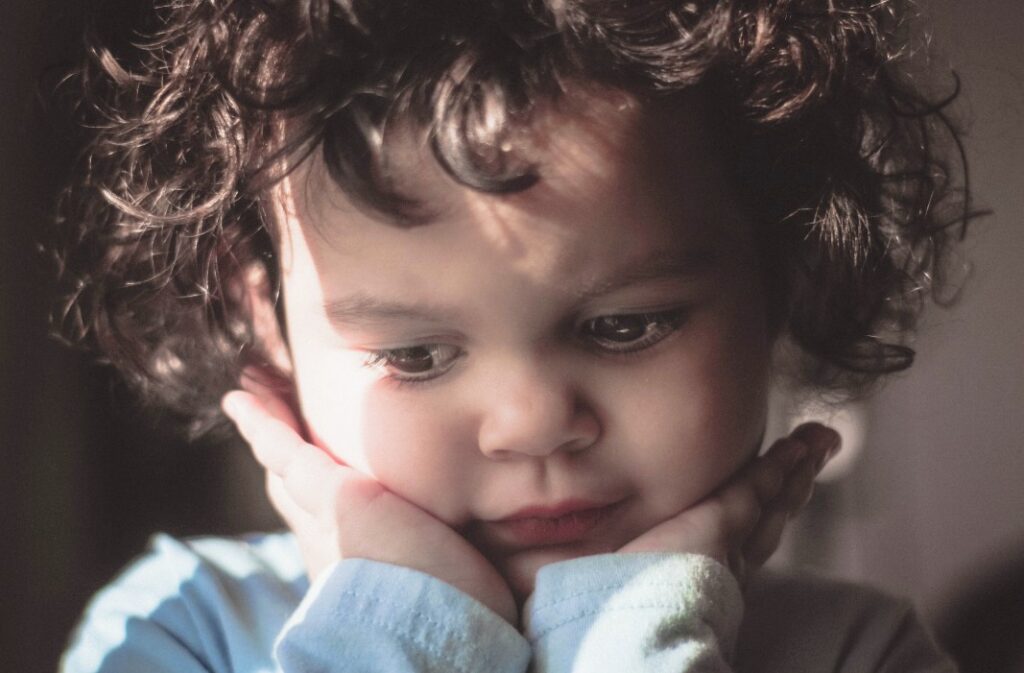A number of behaviours can be distressing to witness as parents, in this article we explain how to stop an autistic child pulling hair.
Hair-pulling in autistic children
If you have been in the world of ASD for any length of time you will be aware that those with autism often have repetitive behaviours.
These behaviours can range from hand flapping, to spinning to pulling their own hair.
What is important to note early in this article is that these behaviours usually serve a purpose.
Although it can be hard to imagine, to an autistic person a repetitive behaviour could be soothing.
Those with autism often feel and interact with the world differently to the neuro-typical.
Due to this something like hand flapping can actually feel pleasurable.
This is not to mention the fact that it can help calm them when feeling overwhelmed.
Whilst hand flapping has its own concerns, something like hair pulling is arguably more distressing to witness.
This is due to the fact that it looks painful and can also lead to clumps of hair being removed.
So as parents it is only natural to want to intervene and somehow stop your child from engaging in hair pulling.

Why do autistic children pull their hair?
Hair-pulling, also known by its medical name of trichotillomania, is not uncommon in children with autism.
It can serve various purposes but is likely to be a manifestation of sensory issues or anxiety.
Hair pulling can also a response to certain environmental triggers such as overwhelming sensory inputs.
As tough as it is, parents should remember that hair-pulling is not a conscious choice.
It is rather a coping mechanism for their child to help manage what is a confusing and overwhelming world.
What can parents do?
As mentioned above, it is natural for parents to be concerned about this behaviour. Whilst every autistic person is individual there are some common tactics to consider;
Identify triggers
As with most interventions, it is important firstly to understand when, where and why your child pulls their hair.
Therefore pay close attention to the circumstances surrounding your child’s hair-pulling episodes.
Look for specific situations, environments, or sensory experiences that seem to trigger this behaviour.
By identifying triggers, you can work towards minimising or avoiding them whenever possible.
Learning your child’s triggers is the foundation of reducing hair pulling.
Provide a sensory alternative
Once you have your child’s triggers nailed down, the next step would be to have sensory alternatives lined up.
Many autistic children engage in hair-pulling as a way to self-regulate their sensory experiences.
To redirect this behaviour consider alternative sensory outlets such as sensory toys, fidget tools, or weighted blankets.
These can help your child find healthier ways to self-soothe.
Create a calm environment
Anxiety and stress would likely be contributing factors to the hair pulling.
Designing a calming and sensory-friendly environment can make a significant difference therefore in managing hair-pulling.
Consider using soft lighting, soothing colours, and comfortable seating arrangements in your home.
Providing a space where your child can retreat when feeling overwhelmed can help prevent hair-pulling incidents.
Many parents have had success with indoor tents for their child to use as a place of refuge.
Embrace routine
As most will already know, autistic children often thrive on routines and predictability.
Try to establish a consistent daily schedule, including mealtimes, playtime, and bedtime, to provide structure and stability.
Incorporating additions such as schedule boards can be helpful.
This can reduce anxiety and the need for hair-pulling as a response to unpredictability.
Be sure to praise your child
It is really important to celebrate even small victories. When your child refrains from hair-pulling, offer praise and positive reinforcement.
It could be that they start but then are quickly diverted to another activity.
A reward system that acknowledges their efforts can be motivating and encourage them to adopt healthier coping mechanisms.
Consider professional help
One step in addressing hair-pulling behaviour in your autistic child is to consult with a therapist who specialises in autism.
They can conduct a thorough assessment to determine the root causes of the behaviour, specific to your child.
The therapist will then likely create a tailored plan for intervention.
Consider drastic measures
We hovered over this suggestion as some may feel it is a bit excessive. But one option would be to shave your child’s hair short.
Some parents of children with long hair may recoil at the thought but what this would do is break the habit your child has made.
If you make it impossible for them to pull their hair then they could forget about the behaviour all together.
We fully appreciate that cutting an autistic child’s hair can be difficult anyway.
But if your child is ok with clippers, this is one tactic to consider.
Summary – How to stop an autistic child pulling their hair
Helping an autistic child overcome hair-pulling behaviour requires patience, and a multilayer approach.
Remember that your child is not choosing to engage in this behaviour.
It is rather an attempt to cope with their unique sensory experiences and emotions.
By being compassionate and understanding you can support your child in managing and eventually overcoming hair-pulling.
Your unwavering love and commitment are invaluable in supporting a comfortable life for your child.

